What Is A Diode?
A diode is a semiconductor that behaves a lot like a resistor, except it also doesn’t. That’s a good explanation, right?
A diode works like a resistor in that they lower the voltage that crosses through them. The difference between a diode and a resistor though is that current can only flow one direction through a diode and, when a diode’s forward voltage is exceeded, that signal carrying that voltage is clipped, and we get overdrive or distortion.
In a lot of ways, a diode acts like a capacitor too. This is because in a capacitor, electrons gather at one side of the component until conditions are right and then jump across. The same thing happens in a diode.
But in reality, a diode is a component all its own. They’re used very commonly in guitar pedals to add distortion or overdrive to a guitar signal. Unlike resistors (but like some capacitors), diodes are unidirectional: electricity can only pass through them one way. Because of this it’s important to make sure a diode is placed into your circuit the right way.
On a circuit diagram, a diode looks like this:

It’s pretty clear which side of the diode here is positive because of the way the arrow is going on the schematic – i.e. it’s point in the direction of flow from positive to negative. So in the symbol above, positive is on the left, negative on the right. In real life, a diode looks like this:

Different diodes may have different markings, but generally the positive side is the bigger colour and the negative side is the smaller colour. So in the picture above, the black is positive, and the grey is negative.
There are a few different kinds of diodes used in making guitar pedals, and each type has a different forward voltage. What this means is explained later in this article.
How Do Diodes Work?
As mentioned, diodes only let electricity through one way, and in some ways behave like a capacitor.
Diodes have two parts to them:
- P junction: this stands for positive conduction. It doesn’t have many electrons.
- N junction: this stands for negative conduction. It has plenty of electrons.
Electrons naturally want to flow from where there are lots of electrons to where there aren’t many of them. So they want to move from the N junction to the P junction. However, crossing the N junction to reach the P junction isn’t that easy. There needs to be enough electrons accumulated to push them through. Then you have current flowing.
You may have heard the term “forward voltage” in relation to diodes, and this is what’s happening when electrons make that jump from N junction to P junction; it’s the amount of voltage needed to spark this jump, and where the voltage falls to after moving through the diode.
Clipping Diodes In Guitar Pedals
Diodes are usually used to “clip” a guitar signal in pedals where you want overdrive or distortion. A clipped signal comes from a diode’s forward voltage being exceeded and therefore the diode removing (clipping) the top and bottom of that signal, distorting the overall sound.
When a signal is only clipped a little bit, that’s referred to as soft clipping, and you get overdrive. If the signal is clipped a lot, that’s hard clipping, and you get distortion.

Sorry about the somewhat subpar diagram, but what you can see is the black normal wave form of your guitar’s signal. The orange is soft clipping; the top is taken off but there’s still smoothness there. Hard clipping (the red) takes that top smoothness off, hence more distortion.
You’ll notice that the waveform for soft clipping is still relatively rounded. Because of this the sound is smoother. It’s distorted, but it’s not distortion in the guitar pedal sense. Distortion is a harsher clipping that really cuts out the peaks of the signal.
So, when you’re talking about an overdrive or distortion pedal that uses diode clipping, the signal comes in as a nice neat wave form, is amplified by an operational amplifier (op-amp), and then clipped by diodes.
As mentioned, the amount of clipping will depend on the forward voltage of the diodes being used.
Also, note well that diodes aren’t the only way to clip a signal. Some amount of clipping will happen simply when you send your guitar signal through an op-amp, and you can also achieve clipping with transistors; but that’s another article.
Clipping comes in different shapes and sizes; let’s take a look.
Soft Clipping
Soft clipping, as the name implies, is less clipping than hard clipping. This is the type of clipping associated with overdrive pedals.
A typical soft clipping circuit looks like this:

If you don’t know how op-amps work yet, that’s OK, but what happens is that the clipping is introduced in the feedback loop of the op-amp. As the resistance changes in the feedback loop, the op-amp let’s out a larger signal, leading to more overdrive when that signal is clipped.
Notice also that the two diodes in parallel are facing different directions; one for positive peaks and one for negative peaks of the AC guitar signal.
Hard Clipping
Hard clipping is used to create distortion. Here, more of the overall signal is clipped off, creating a more distorted sound. To create hard clipping, first the signal is increased through an op-amp, and then it’s passed through two diodes that are wired to ground.
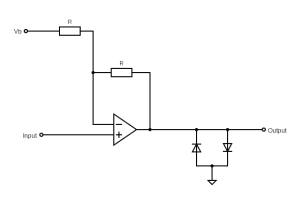
So if you’re after distortion, place the diodes after your signal amplification!
Notice also that the two diodes in parallel are facing different directions.
Diodes In Series
You’ll also sometimes see more than one diode used.
This will vary the amount of clipping happening in your circuit, and I encourage you to play around with it. This of course leads to symmetrical versus asymmetrical clipping.
Symmetrical Clipping
Symmetrical clipping refers to diode clipping where the same amount of diodes are used in each parallel arm. You’ve already seen this in the examples used, but here it is isolated:

The clipping here is symmetrical because two diodes are being used, each pointing an opposite way in parallel. It would still be symmetrical if two pairs of two diodes were used, two pairs of three, etc.
Symmetrical clipping can give a smoother sound that is a little more uniform overall. This is a bit more of a modern sound that can suit a lot of different music styles.
Asymmetrical Clipping
Asymmetrical clipping happens when more diodes are used on one parallel arm compared to another, like this:
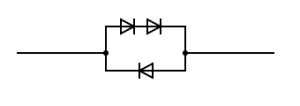
Since the clipping amount is different in each direction, the peaks of the signal are clipped a different amount than the troughs. This creates a more organic sound more reminiscent of a naturally overdriven tube amp. That’s what people say at least; there’s a lot of debate over symmetrical versus asymmetrical clipping.
Enjoying This Component Guide?
Learn more about diodes and other guitar pedal components.
What Are The Different Kinds Of Diodes?
Different types of diodes have different forward voltages. While I’ll go into how to select the best kind of diode for your DIY guitar pedals later in the article, keep in mind that a lower forward voltage will result in more clipping.
This may sound counterintuitive, but remember that forward voltage is the amount of voltage that needs to be exceeded in order to get the signal clipped. So a lower forward will clip a signal sooner and harder than a higher forward voltage.
I’ll go through the different types of diodes and their forward voltages, but keep in mind that there is some variation in forward voltage even across diodes of the same type. I can’t really list every diode ever made, but you’ll find that forward voltage can be slightly different than what’s listed here. Consult data sheets if you need exact numbers.
Silicon Diodes
Silicon diodes typically have a forward voltage of about 0.7 volts.
Although silicon diodes usually have around 0.7 volts of forward voltage, some data kinds of silicon diodes have forward voltage as low as 0.45 volts and as high as 0.8.
Silicon diodes are pretty common in a lot of modern guitar pedals and offer a moderate amount of distortion/overdrive without too much sound compression.
![]()
Germanium Diodes
Germanium diodes typically have a forward voltage of about 0.35 volts.
Again, while the typical forward voltage of germanium diodes is around 0.35 voltages, they can get as low as around 0.2 volts.
Some people swear by germanium diodes, feeling they have a more organic sound. These diodes have heavier clipping with more compression.
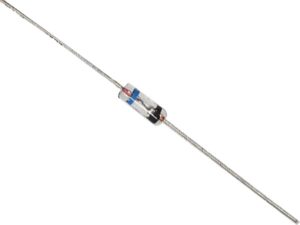
Schottky Silicon Diodes
Schottky diodes typically have a forward voltage of about 0.25 volts.
Schottky diodes have the lowest forward voltage typically used in guitar pedals. Because of this, they can add a lot (almost too much) distortion. If that’s the sound you’re going for, then go for it!
All in all, while you can find Schottky diodes that get close to the forward voltage of germanium diodes, they’re often lower.
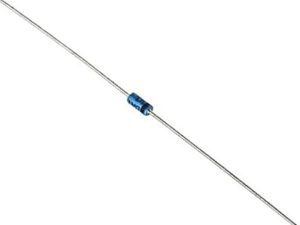
LEDs Used As Diodes
LEDs can be used as diodes as well, but their forward voltage is dependent on the colour of the LED:
- Red: 1.7 volts
- Orange: 2.0 voltage
- Yellow: 2.1 volts
- Green: 2.2 volts
- Blue: 3.2 voltage
Since forward voltages for LEDs are so high, these are usually used for applications that require less clipping and a more open sound.

Choosing The Right Diode For A Guitar Pedal
You’ve probably already guessed it from the previous assessment, but different types of diodes do well for different uses. A diode with a lower forward voltage will clip the signal more, create more distortion and more compression.
A more compressed sound is less dynamic in terms of volume. This can be a good thing sometimes, and is typical of distortion pedals. Overdrive pedals, on the other hand, have less clipping and often less compression, allowing for more dynamics in volume. This is why an overdriven sound often becomes more overdriven when you play your guitar hard. A summary of how different diodes is:
- Schottky diodes: lowest forward voltage; very distorted and very compressed.
- Germanium diodes: low forward voltage; lots of distortion and compression.
- Silicon diodes: mid-range forward voltage; great overdriven sounds.
- LEDs: high forward voltage: dynamic sound with minimal clipping.
Diodes Can Also Be Used To Prevent Polarity Inversion
It’s also not uncommon to throw a diode into a guitar pedal circuit to protect the electricity going the wrong way, potentially damaging the guitar pedal.
Since diodes only go one way, a diode can be used in the power supply to prevent power flowing the wrong way.
Summing Up
Diodes are generally used in guitar pedals to clip the signal coming through and add overdrive or distortion. Depending on the type of diode used, and its placement, hard or soft clipping can occur to drastically change the sound of a guitar pedal.
Play with some basic overdrive and distortion circuits to see what works best for you. It’s lots of fun!
Related posts:
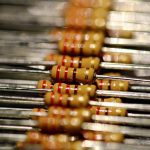 Ultimate Guide To Resistors In Guitar Pedals: What They Do And How They Work
Ultimate Guide To Resistors In Guitar Pedals: What They Do And How They Work
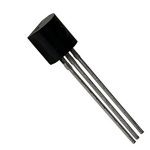 Ultimate Guide To Transistors In Guitar Pedals: What They Do And How They Work
Ultimate Guide To Transistors In Guitar Pedals: What They Do And How They Work
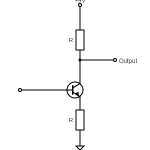 What Is Transistor hFE?
What Is Transistor hFE?
 What Is Gain (And How It’s Different From Volume)
What Is Gain (And How It’s Different From Volume)
 The Difference Between Silicon And Germanium Transistors
The Difference Between Silicon And Germanium Transistors
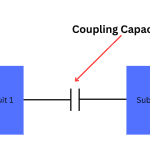 What Are Coupling Capacitors?
What Are Coupling Capacitors?
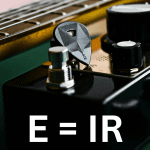 Ohm’s Law: Explanation And Applications
Ohm’s Law: Explanation And Applications
 How Do Guitar Pedal (And Guitar) Volume Knobs Work?
How Do Guitar Pedal (And Guitar) Volume Knobs Work?
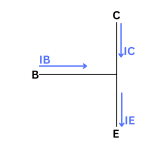 Transistor Saturation, Active, And Cutoff Region
Transistor Saturation, Active, And Cutoff Region
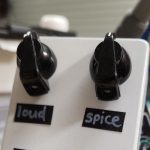 How Does A Drive, Gain, Or Distortion Knob Work?
How Does A Drive, Gain, Or Distortion Knob Work?
